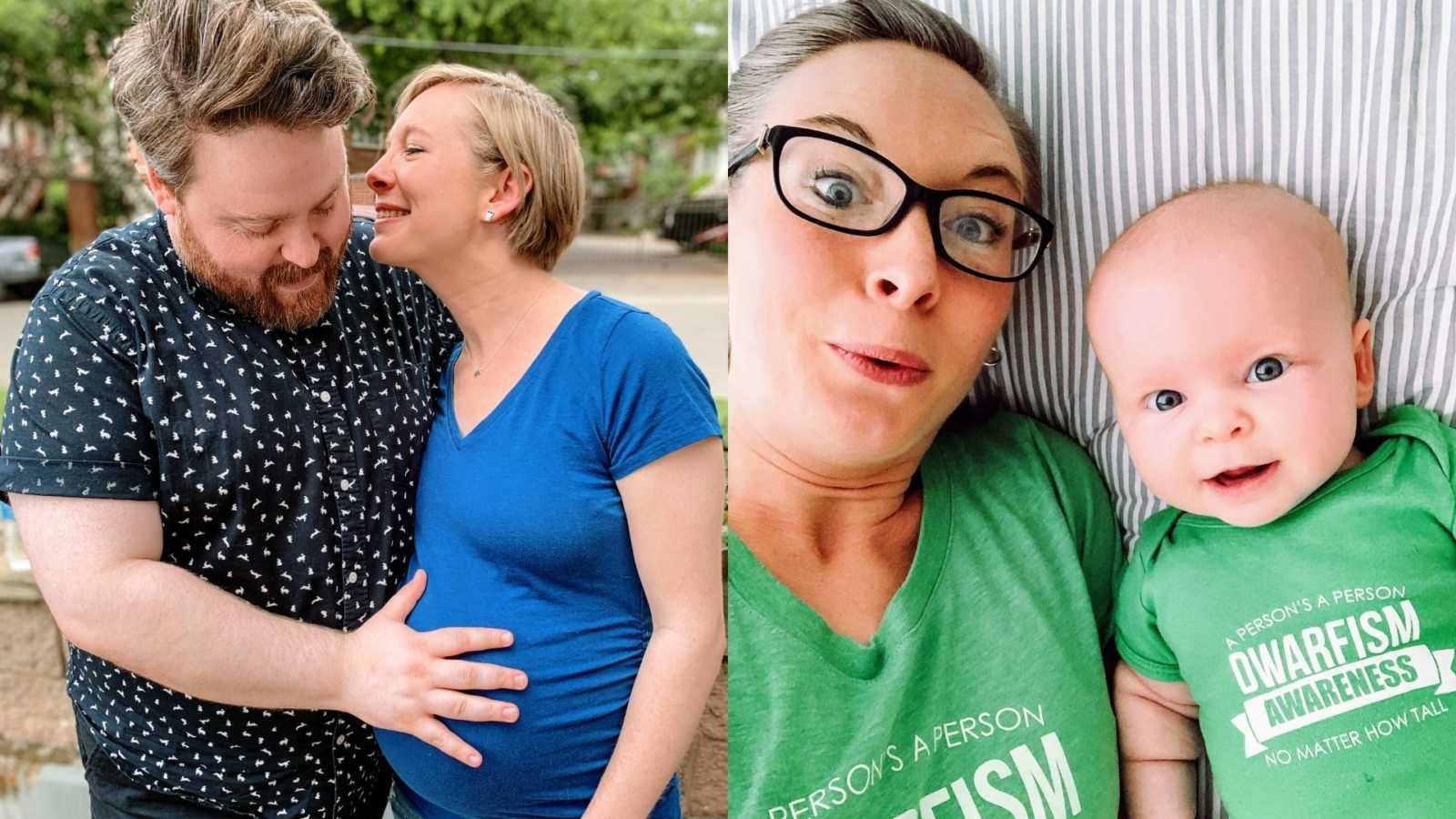“On the afternoon of April 23, 2019, we were just a typical couple going in for a routine 35-week ultrasound for our very typical, textbook pregnancy. We walked out of the appointment feeling not-so-typical anymore—as well as confused and so very scared. The ultrasound tech went to work taking all the usual measurements. Everything was lighthearted. My husband, as per usual, was cracking jokes and one-liners, and the tech said, ‘I wish I could be with y’all in the delivery room. You’re so funny!’ Then my husband asked, ‘So, is everything measuring what it’s supposed to?’ The tech didn’t answer the question and changed the subject. I didn’t notice, but my husband told me afterward it was his first clue something wasn’t quite right.
After printing out our ‘glamour shots,’ as she called them, she said she was going to go get the doctor to examine all the measurements, and left me lying there with the gel still on my stomach ‘just in case the doctor wants to take a few more measurements.’ Our second clue. She had left the screen up, which listed all the measurements she’d taken, with the Hadlock abbreviations for biparietal diameter, head circumference, abdominal circumference, and femur length, next to the average week associated with the measurements she’d taken. Like anyone—and, especially, people who’d had two clues something wasn’t quite right—we examined the screen. BPD: 40w0d. HC: 40w5d. AC: 32w1d. FL: 29w3d.
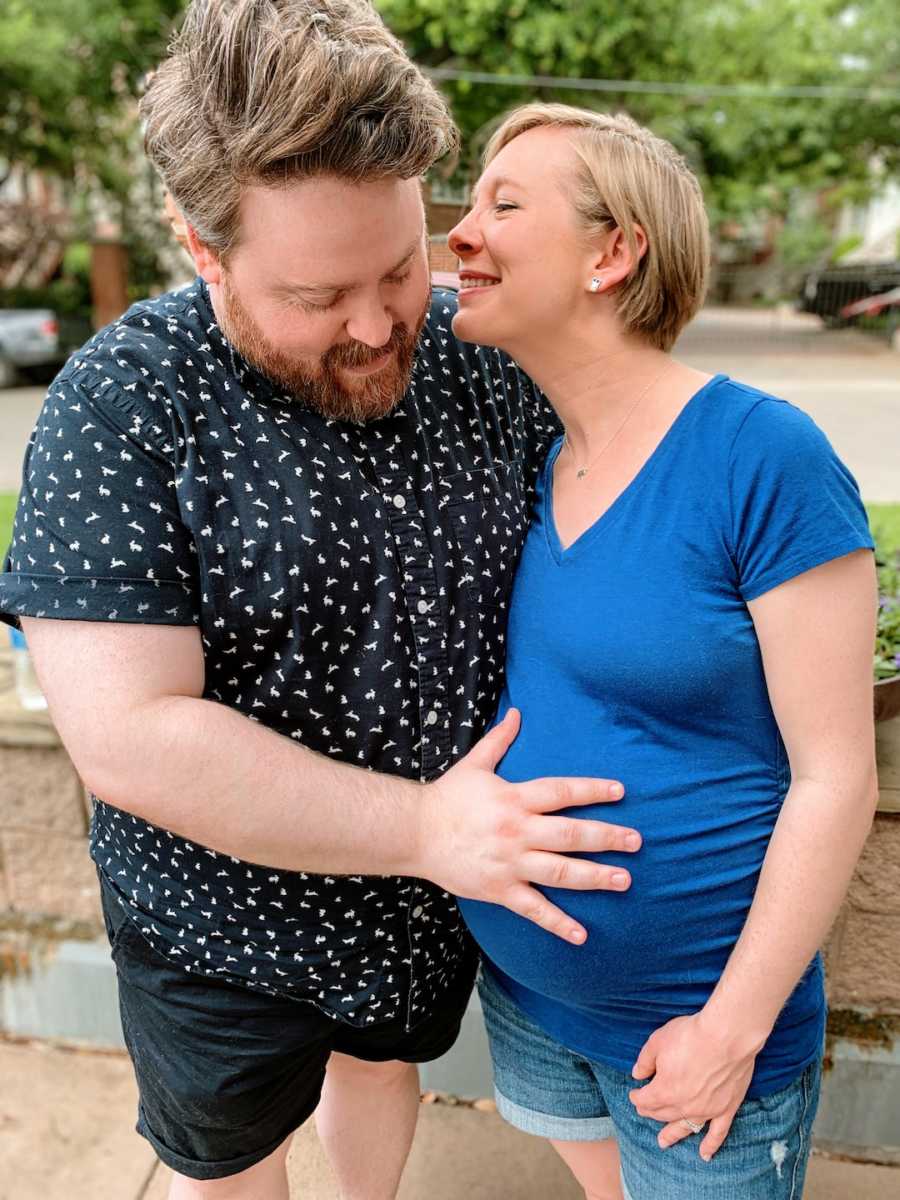
There was a 1o-week difference listed between my baby’s head size and femur length. Her head was already measuring full term at 35 weeks. Her femurs were measuring woefully behind. 6 weeks behind where they should be, and 10 weeks behind her head. Following a soft knock, the door opened, and a thin woman in scrubs walked in and introduced herself as one of the clinic’s high-risk obstetricians. The alarms in my head, which had begun going off while we were looking at the numbers on the screen, began blaring so loud I could barely focus. ‘High-risk?’ What was wrong with my baby? What did they find? Did they miss something at the 20-week ultrasound and were only just now seeing it? How could this happen? Everything had come back perfectly normal. How could something be happening now?
The doctor went on to explain what we had already seen on the screen. The baby’s head was measuring large—above the 95th percentile for her gestational age. Meanwhile, her femurs were measuring small—below the 5th percentile for her gestational age. The doctor went on to say this indicated a strong likelihood of some kind of skeletal dysplasia. Skeletal dysplasia. It doesn’t exactly have a warm, fuzzy sound. She told us there are hundreds of kinds of skeletal dysplasias, but to be honest, I don’t remember most of what she said after. I was stunned into silence. I do remember her saying third-trimester ultrasounds are only so accurate. The Hadlock numbers can’t account for all genetic variations (variations within our families), and everything else about her looked normal from what they could see.
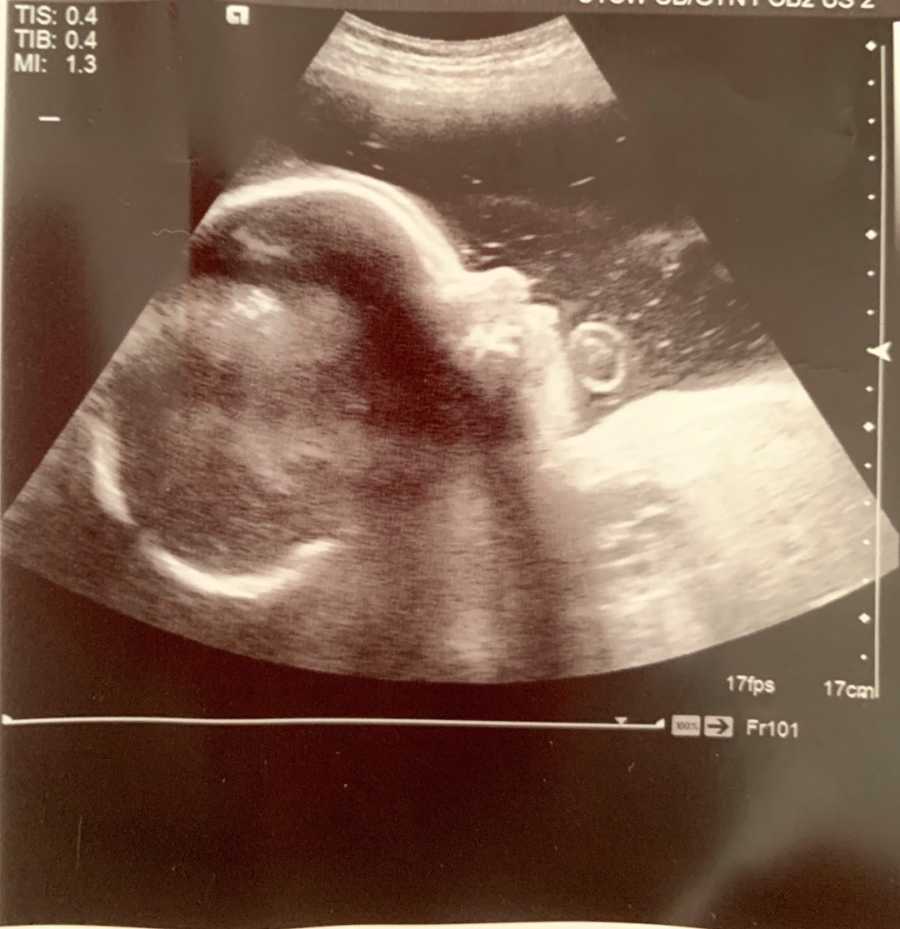
The bones, although short, showed no signs of bowing, fracturing, with normal ossification. All those things seemed to indicate if she had some sort of dysplasia, it may be mild. Skeletal dysplasias are fairly rare, but the most commonly occurring kind is achondroplasia. She also said she thought they would probably have seen something in the 20-week ultrasound if it was achondroplasia, but she wasn’t sure. And then she told us she could get us some information on genetic testing or refer us for genetic counseling.
Mostly, I just wanted to leave so I could go cry. I was not prepared for this. My pregnancy had been textbook. Absolutely average and normal all the way around. This fell out of the clear blue sky directly into our laps. In shock, we made our way out of the clinic to the car. I felt like everything had gone so wrong. How had everything gone so wrong? I had been so excited for today and now I wished it had never happened. We’d only just learned the term ‘achondroplasia,’ but my husband and I are chronic researchers and had already Googled and read several things by the time we were ready to head home. I already knew achondroplasia is most often a spontaneous mutation, not even a result of genetic heredity when the child is conceived by two average-height parents. But my soft, still-forming mom brain immediately did what mom brains tend to do. ‘What did I do that might have caused this? Did I eat something I shouldn’t have? Inhale some secondhand smoke? Get exposed to something harmful?’
We sat in the car for a few minutes, the air tense, our emotions raw, tears leaking down my face. Then, as we started pulling out of the parking garage to head home, I got an incoming call from a local number. I answered, and it was the doctor. I listened to her for a while and eventually, as we pulled in next to my car, I switched to speakerphone so my husband could hear her too. ‘I’m so sorry to call you back like this, but I’ve just gone back and done some reading, and achondroplasia does not generally present in ultrasounds until the third trimester. I can have our Fetal Care Coordinator give you a call on Monday with options for referrals for genetic counseling or genetic testing, and I’ll brief your doctor before you meet with her on Monday so she has all the facts. Again, I’m so sorry to call you back like this, I just didn’t want to mislead you. There is a strong likelihood what we’re seeing is a presentation of achondroplasia.’
I could barely swallow, let alone make a sound. We were both reeling. We would later read over and over about how rare achondroplasia is—one in anywhere from 25,000 to 40,000 babies is born with it, or anywhere from 0.0067% to 0.0033%. How could it be us? We finally made it home. We contacted our parents and told them as much as we knew. We cried. We Googled. We read. We found lots of people online who said they were told one thing in their third-trimester ultrasound, only to go on to have babies with no signs of skeletal dysplasias. And to a certain extent, we remained in denial this could be us, this could happen to our baby.
After a long weekend where we mostly did fine, I met with my doctor on Monday and FaceTimed my husband into the appointment. My OB was sympathetic and supportive but repeated the same things the high-risk OB had said. This is what the numbers are telling us, and there’s a strong likelihood she has some form of skeletal dysplasia. She didn’t offer us any reassurance or encouragement other than to say there was a ‘small chance it could be nothing,’ which made our hearts sink. She told me, given the baby’s breech presentation and large head size, they wanted to schedule another ultrasound for 38 weeks. If she was still breech and her head had grown some more, schedule a c-section for the very next day: Thursday, May 9.
In the days following, we spent hours upon hours reading any medical journal articles we could get our hands on, blog posts, message boards, all of it. Anything regarding skeletal dysplasias. After a day or two, it dawned on us achondroplasia, while the most common of the skeletal dysplasias, was only one possibility, and there was perhaps a remote possibility she has something rarer or even more severe. When we started to contemplate the possibility she could perhaps not survive or require lifelong care, our imaginations spiraled to difficult places. We began thinking through worst-case scenario contingency plans—moving closer to our families sooner rather than later, discussing one of us taking a breadwinner role and one of us taking a caregiver role—all the while feeling panicked and trapped. We didn’t sign up for this. What was supposed to be one of the happiest parts of our lives had suddenly turned into a horrid nightmare. My husband went to extremes and said he was afraid of this splitting us up. All I could do was hold him while we both cried.
For a few days, I was very emotional at work. I couldn’t seem to stop crying. I texted my mom and talked with my coworkers and friends. I felt like an emotional zombie, just shuffling through the day. But a few days later, things started to get a little easier. More reading and reflecting on the normalcy of so many of her other readings led me to feel relief when I thought perhaps all it was was achondroplasia. I downloaded the Little People of America’s handbook for parents and started reading. Even though I was still grieving, I felt myself moving toward a place of acceptance. I found myself thinking if she happened to have dwarfism, that’ll be just fine. I’d feel ready to meet the challenges. Looking back, I’m kind of amazed at how quickly I was able to move through the stages of grief. At our 38-week ultrasound, Marlowe had flipped herself around to be head down, but her long bones were still measuring very short, and her head hadn’t grown significantly in those three weeks. We scheduled an induction for 39 weeks exactly.
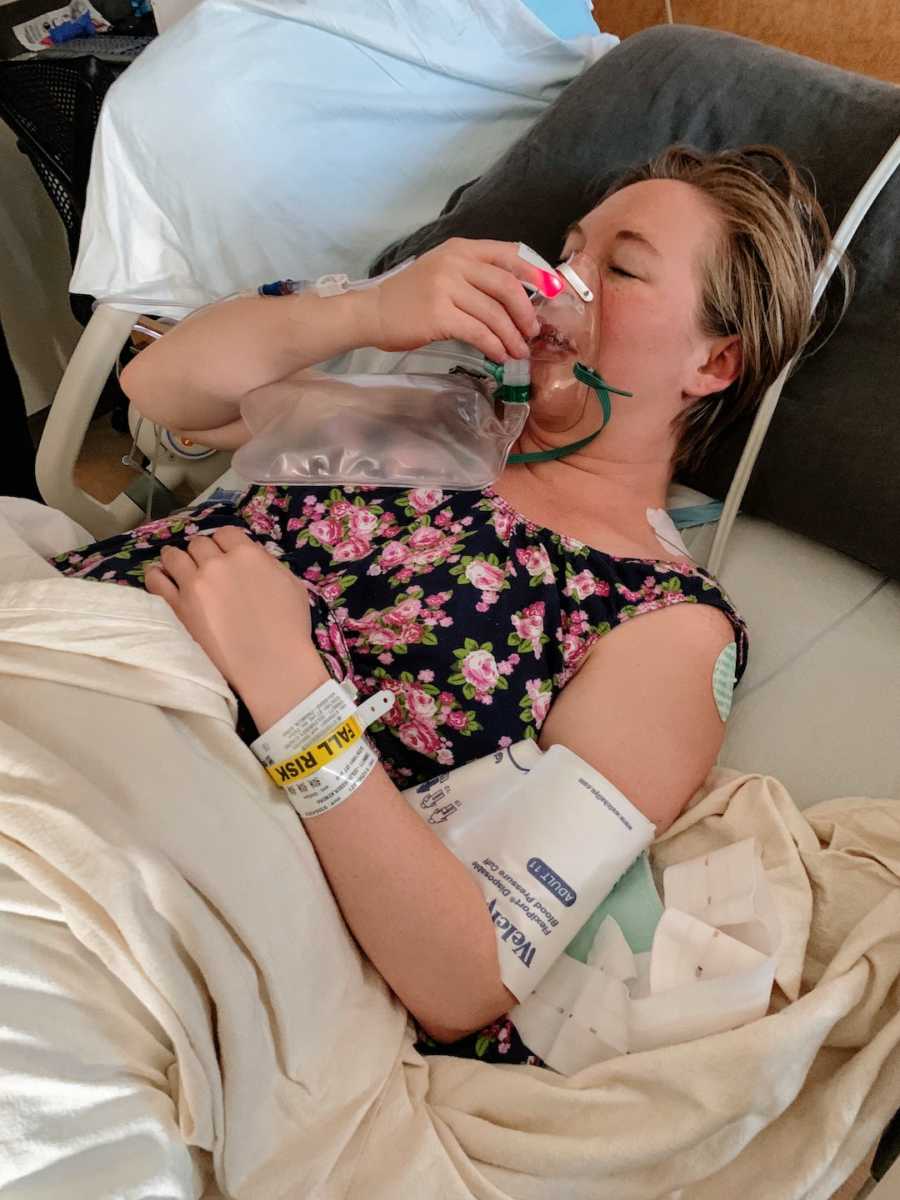
On the evening of Tuesday, May 14, after much waiting, anxiety, grieving, crying, and wondering, I checked in to the hospital. It was a long and very difficult labor. When my water broke, the nurse-midwife on duty was shocked by how much fluid there was, and said she was sure there was more fluid than normal. Though none of our ultrasounds had revealed excessive fluid, this set off even more alarm bells something wasn’t right. From all our reading, we knew polyhydramnios was often a sign of fetal anomalies. Marlowe was born 38 hours after I checked into the hospital, at 10:05 a.m. The NICU team had been on standby, in case she had any trouble breathing after she was born, but she sure showed us. She was screaming before she was even fully out. Pink and screaming and the most beautiful thing I’d ever seen or heard. I couldn’t stop sobbing with relief. When they finally brought her to me, I sobbed all the harder.
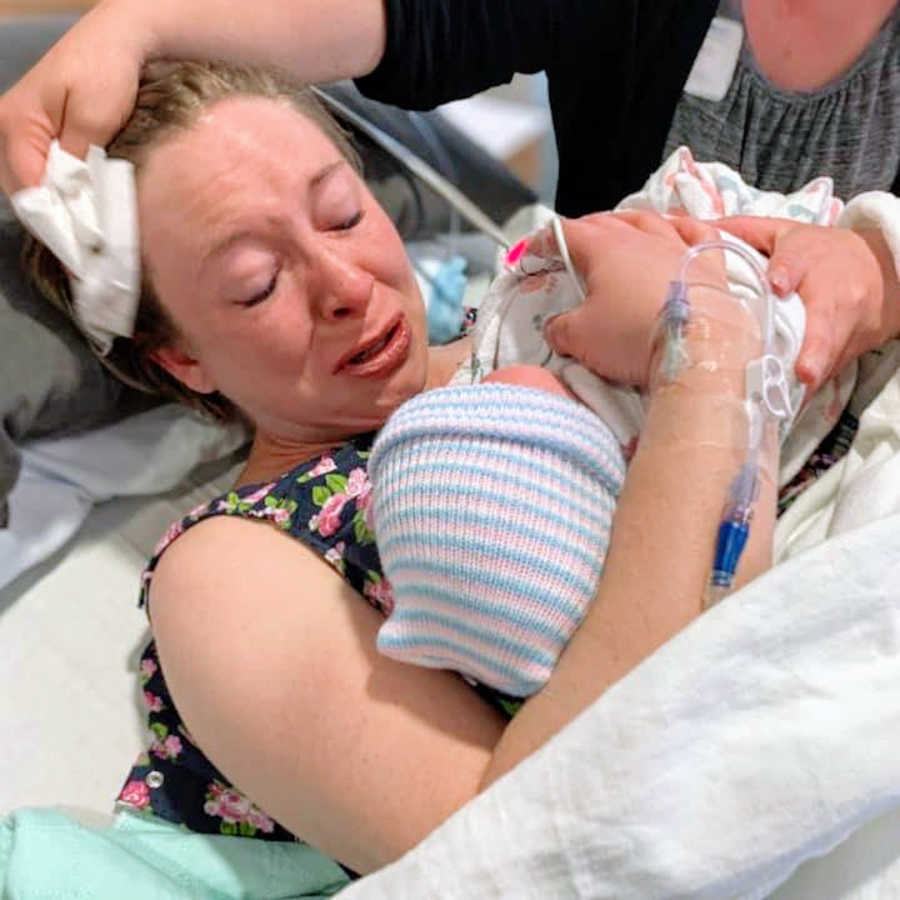
None of the pediatricians in the hospital could tell us whether or not Marlowe had skeletal dysplasia just by looking at her. Heaven knows, we certainly couldn’t. We chose not to send her for x-rays or genetic testing at that point, either, and just decided to take her home. We had a few days where we thought maybe, perhaps, it had all been a mistake. Maybe she was just an average baby and the MFMs had gotten us all worked up over nothing. But several days went by, and all that research we’d done caused us to make some observations we probably wouldn’t have otherwise: we noticed Marlowe’s hands. Her sweet, beautiful little trident hands. And then we knew. When Marlowe was 1 month old, a geneticist diagnosed her with achondroplasia dwarfism.
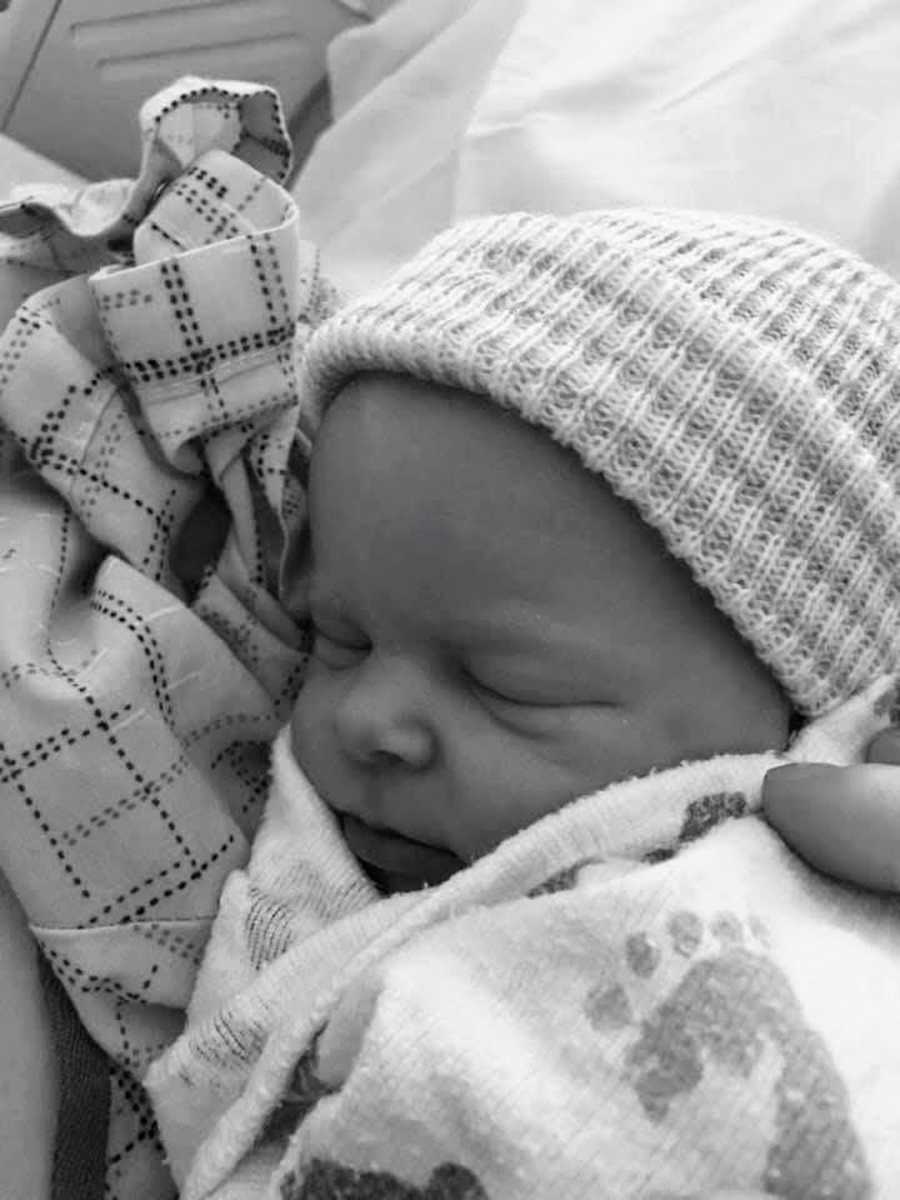
Since her diagnosis, she’s had an MRI, a rapid MRI, a sleep study, been scoped by ENT, had more hearing tests than I care to remember, had a yearly genetics appointment, and seen an orthopedic specialist twice. In our case, Marlowe has had virtually zero medical issues. The first year in the life of some babies with achondroplasia is fraught with surgeries, repeat sleep studies, braces, and other medical interventions we didn’t have to go through, but all the appointments and keeping track of everything was still overwhelming at times.
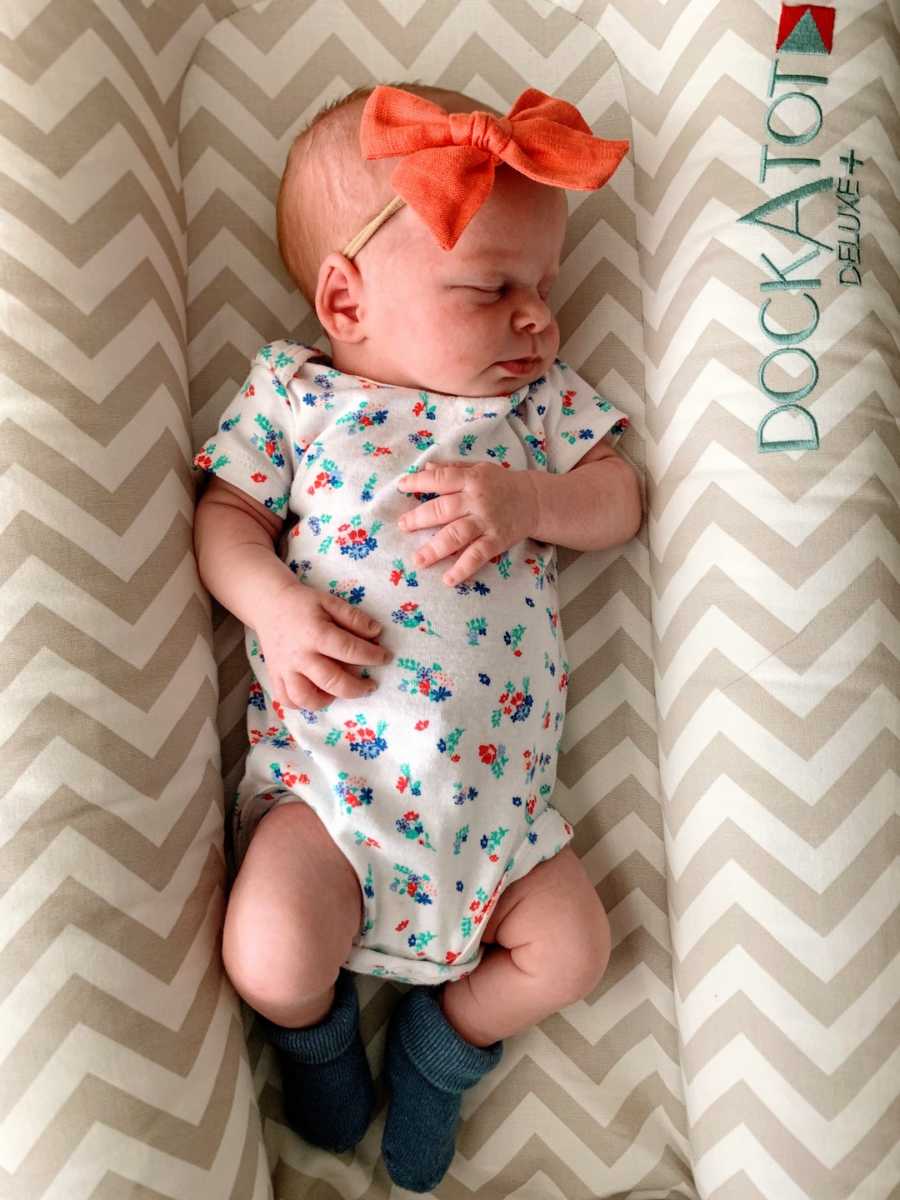
Today, she’s 18 months old and the busiest, bubbliest, happiest, smartest, funniest toddler you can imagine. She runs and plays and climbs and talks nonstop. She loves people and waves at everyone she sees. It can be hard to find clothes and shoes that fit her sometimes—it just comes with the territory—but we take it in stride. She brings so much joy to our lives, I sometimes think about all the grief we went through after that 35-week ultrasound, and it makes no sense against the backdrop of our lives today. I also know it was perfectly normal, and all a part of the journey that brought us here.
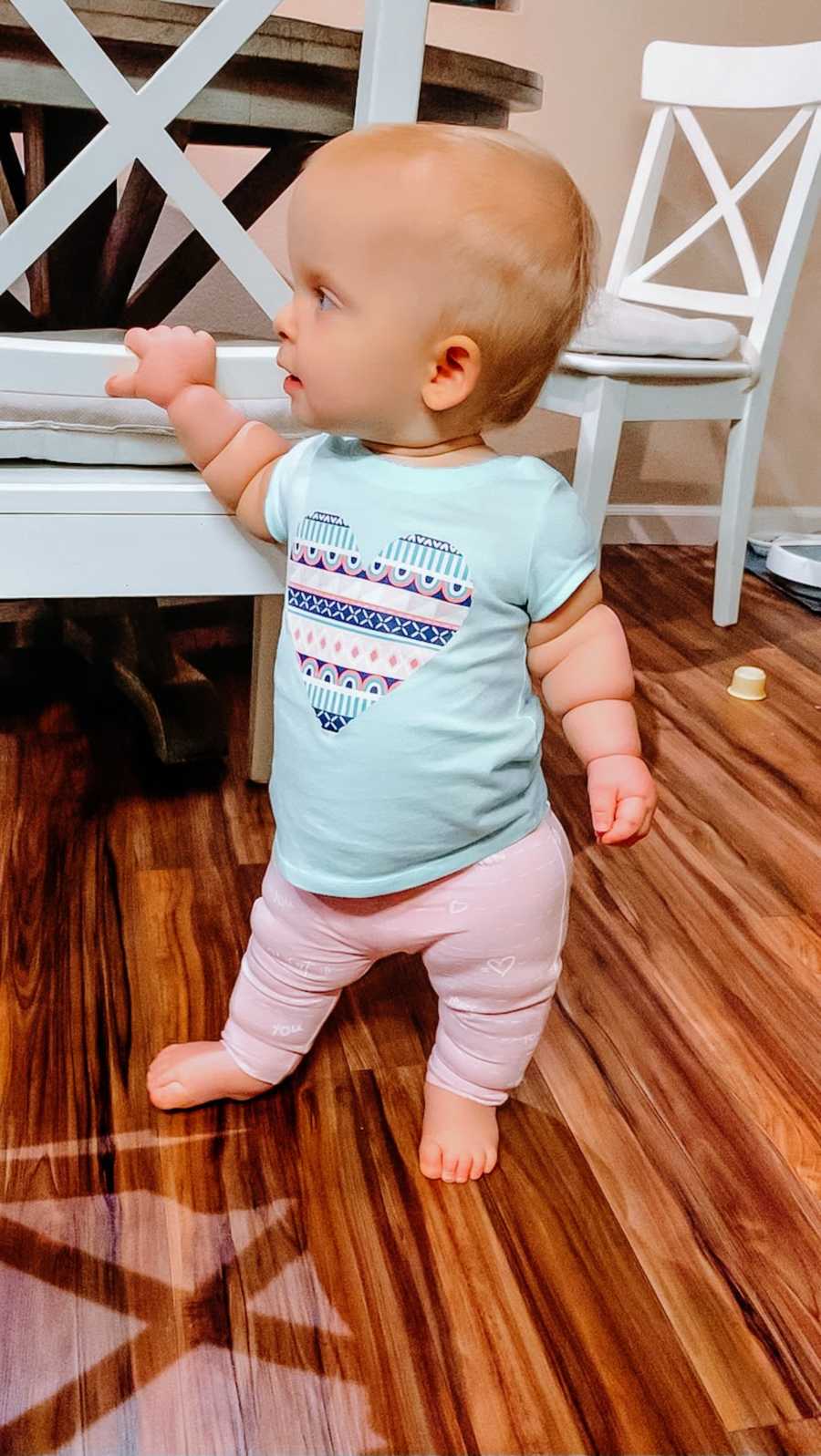
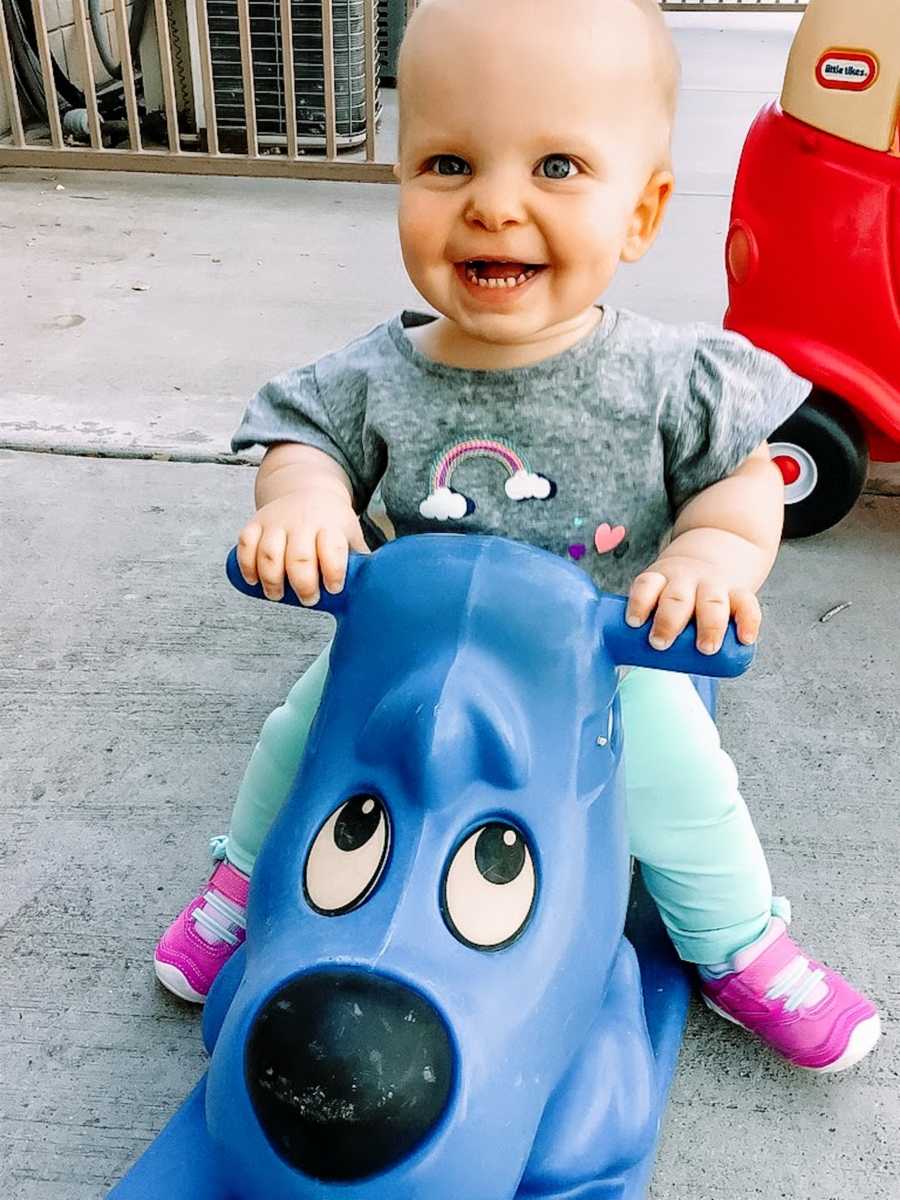
Marlowe doesn’t know yet she’s little, and she won’t for a while yet. I hope the fire and sass and strength of will she’s exhibited in her year-and-a-half of life so far stays with her always and serves her well. As she grows up, I hope to show her even though her dwarfism is part of who she is and always will be, it never needs to define her or limit her. The world is her oyster.”
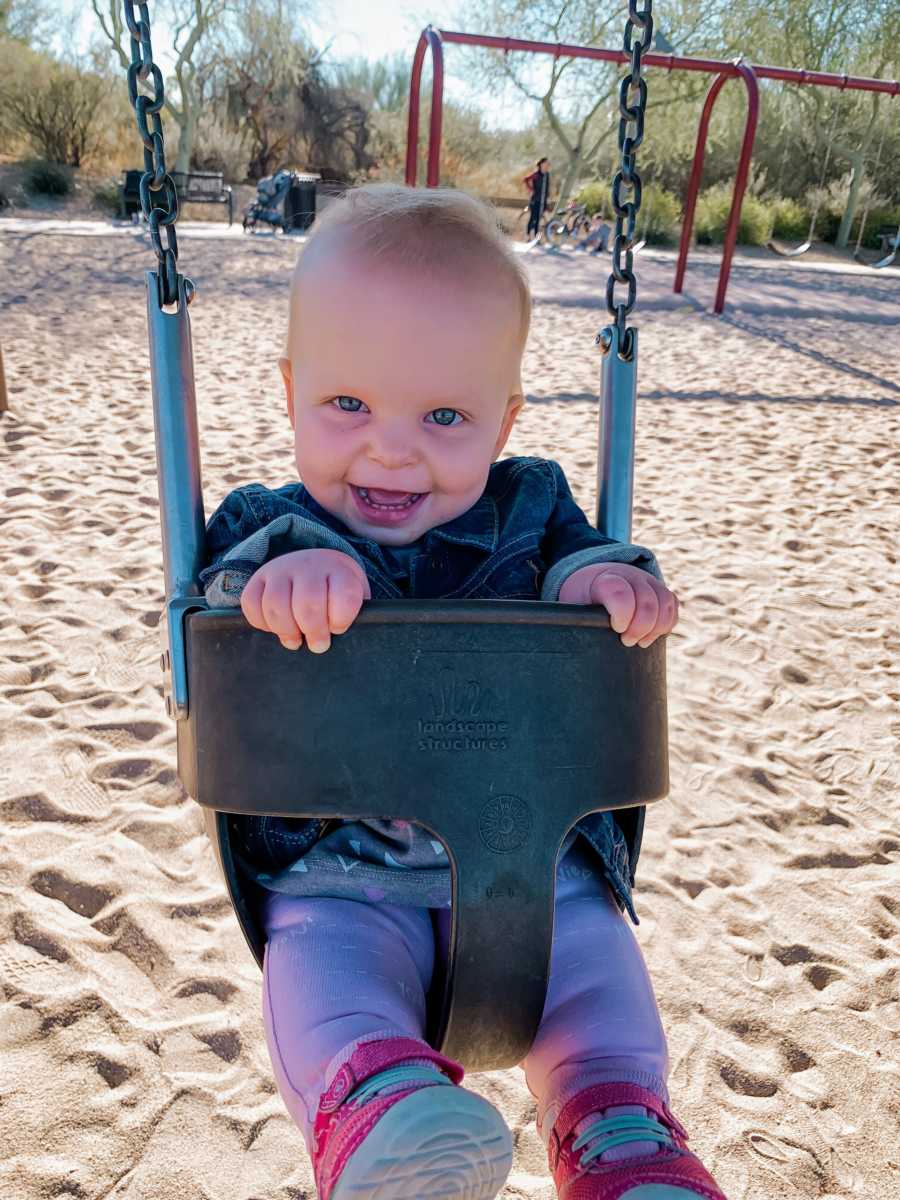

This story was submitted to Love What Matters by Kendra Emmett-Goldwasser. You can follow their journey on Instagram. Submit your own story here, and be sure to subscribe to our free email newsletter for our best stories, and YouTube for our best videos.
Read more stories like this:
SHARE this story on Facebook to help celebrate unique and beautiful differences!

